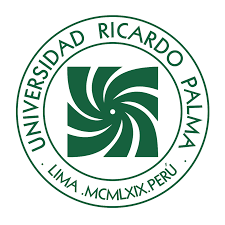Protection for the banks of the Moche river: sustainable structure
DOI:
https://doi.org/10.31381/perfilesingenieria.v20i21.6083Keywords:
Eco-friendly gabion, Environmental impact, River hydraulics, general scour, Riverside Defense, HydraulicsAbstract
This research aims to make a proposal for a sustainable structure for the protection of the Moche River in Trujillo, La Libertad. The methodology used focused on quantifying the biological, topographic, hydrological, hydraulic, structural and environmental variables. According to the eco-friendliest theories used in international literature, as well as technical standards E030, water resources law and the environmental impact law. ArcGIS pro HEC-RAS and Gawac 3.0 mathematical models were used to analyze and process the variables; and SPSS29 statistics. The main results were that favorable conditions exist to execute the sustainable structure. The maximum flood 643.47 m3/s for a return period of 140 years and a maximum water depth of 7.62. The dimensions of the gabion structure ranged between 4 and 8 meters in accordance with the topography of the river bank. The gabion wall had 58% direct and indirect negative impacts, while 78% were positive impacts to the environment. It is concluded that gabions are a sustainable structure for the care and protection of the environment and society.
Downloads
References
Vargas-Aliaga, C (2015). Gestión integrada del agua de riego en la cuenca baja del Rio Moche, Trujillo-Perú https://pirhua.udep.edu.pe/bitstream/handle/11042/2793/MAS_GAA_023. pdf?sequence=1&isAllowed=y
Grupo Rpp. (2015). Hallan construcciones ilegales en el cauce del Rio Moche
Instituto Nacional de Estadistica e Informatica. (2015). Poblacion del Distrito Moche.
Fernandez, C. (2021). Rain for Peru and Ecuador (RAIN4PE). https://dataservices.gfzpotsdam.de/pik/showshort.php?id=6f766e20-2d94-11eb-9603-497c92695674
Lluén Chero, W. E. (2015). Aplicación de la nueva herramienta HecRas 5.0 para cálculos bidimensionales del flujo de agua en ríos. Tesis, UPC Barcelona TECH, Barcelona. https://upcommons.upc.edu/bitstream/handle/21-17/81164/17371290.pdf?sequence=1&isAllowed=y
SENAMHI. https://www.senamhi.gob.pe/?p=senamhi
Autoridad Nacional del Agua, (2008), https://www.gob.pe/institucion/-ana/institucional
Bello, M. (2012). Cálculo de periodo de retorno. http://ru.ffyl.unam.mx/bitstream/handle/10391/3722/07_Bello_Velazquez_Periodo_retorno_Guia_Metodos_Estadisticos_2012.pdf?sequence=1#:~:t ext=Se%20ordena%20la%20serie%20de,solo%20se%20multiplica%20po r%20100.
Published
How to Cite
Issue
Section
License
Copyright (c) 2024 Marco Ademir Morales Virhuez, Fabian Alberto Alva Rodriguez, Keren Celeste Guzman Chuquispuma, Anyela Camila Saravia Torres, Karla Sofia Fernández Solórzano, Maiquel López Silva

This work is licensed under a Creative Commons Attribution 4.0 International License.
In the event that the manuscript is approved for its next publication, the authors retain the copyright and assign to the journal the right of publication, edition, reproduction, distribution, exhibition and communication in the country of origin, as well as in the abroad, through print and electronic media in different databases. Therefore, it is established that after the publication of the articles, the authors may make other types of independent or additional agreements for the non-exclusive dissemination of the version of the article published in this journal (publication in books or institutional repositories), provided that it is explicitly indicated that the work has been published for the first time in this journal.
To record this procedure, the author must complete the following forms:

1.png)








